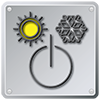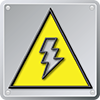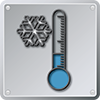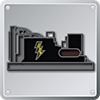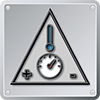
Temperature Controls
Temperature Control is critical to manufacturing and the thousands of underlying manufacturing processes. And nearly all products require either exact temperatures or, at minimum, specific temperature ranges during the manufacturing process. In fact, the wrong temperature can result in defective materials, partially adhered coatings and finishes, or coatings that have failed to adhere at all.
Likewise, temperatures that are too high or too low may indicate machinery malfunctions or machinery operating outside of required specifications. And the results can range from nominal to life-threatening, depending on the end use of the product.
At Kidron Electric, we work with our clients to design, build, and install temperature control systems that provide consistent and accurate temperatures (and temperature ranges) throughout the entire manufacturing process.
While are systems are client-specific, there are typically three main types of temperature control “systems” that are available. These include On/Off Temperature Controls, Proportional Controls, and PID (Proportional-Integral-Derivative) Controls.
On/Off Temperature Controls
Much like a household thermostat, an On/Off Temperature Control is relatively simple. If the temperature drops below a set point, the control triggers (via turning power on) an increase in temperature. If the temperature exceeds a set point, the control triggers (via turning power on) a decrease in temperature. This type of control is typically used when slower temperature changes and more general temperature ranges are acceptable.
Proportional Controls
Proportional Controls increase or decrease the average power supply to the heating mechanism as the actual temperature (within the designated “proportional band”) approaches or moves away from the targeted temperature (or set point). The result is more stable temperature control without the “cycling” in temperatures common to On/Off Temperature Controls.
PID (Proportional-Integral-Derivative) Controls
PID Controls add two additional elements to Proportional Controls as above. The Integral (sum of past adjustments) and Derivative (rate of change of past adjustments) elements combine with proportional control to help automatically adjust the temperature toward the set point.

